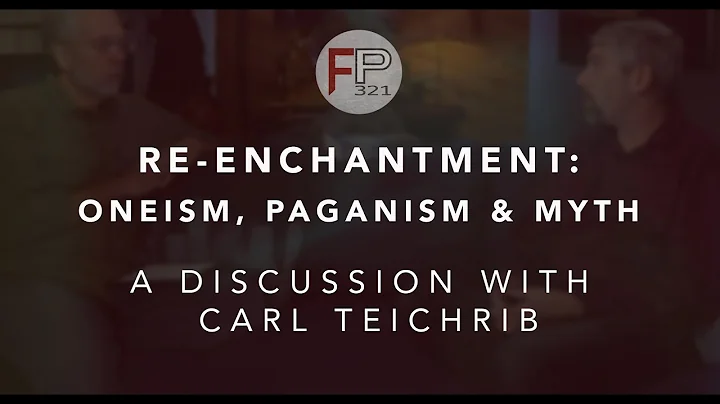Unveiling the Mystery: Understanding Sleep Paralysis and Its Effects
📑 Table of Contents
- Introduction
- What is Sleep Paralysis?
- Why Does Sleep Paralysis Occur?
- The Experience of Sleep Paralysis
- 4.1 The Feeling of Pressure on the Chest
- 4.2 Seeing Shadows or Figures
- 4.3 The Sensation of Floating or Levitating
- Factors that Contribute to Sleep Paralysis
- 5.1 Sleep Deprivation
- 5.2 Irregular Sleep Schedule
- 5.3 Stress and Anxiety
- 5.4 Sleep Disorders
- Medical Explanations for Sleep Paralysis
- 6.1 REM Sleep Dysfunction
- 6.2 Neurological Conditions
- 6.3 Sleep Paralysis and Hallucinations
- How to Manage Sleep Paralysis
- 7.1 Improving Sleep Hygiene
- 7.2 Reducing Stress and Anxiety
- 7.3 Seeking Medical Help
- Conclusion
- Resources
📝 Article
Introduction
Have you ever experienced a peculiar phenomenon where you wake up from sleep but find yourself unable to move your body? If yes, then welcome to the world of sleep paralysis. In this article, we will delve into the fascinating aspects of sleep paralysis, exploring why it occurs and how it affects individuals. Sleep paralysis is a bewildering occurrence that can leave anyone feeling uneasy and disoriented. Understanding the science behind it can help alleviate fear and provide insights into managing this condition effectively.
What is Sleep Paralysis?
Sleep paralysis is a temporary condition in which an individual is temporarily unable to move or speak while transitioning between sleep and wakefulness. It is often accompanied by a feeling of pressure on the chest and a sense of impending danger or terror. Sleep paralysis typically occurs during the transitional stages of sleep, namely during the hypnagogic (falling asleep) or hypnopompic (waking up) periods. While the exact prevalence of sleep paralysis is unknown, it is estimated that up to 40% of people experience it at least once in their lifetime.
Why Does Sleep Paralysis Occur?
The exact cause of sleep paralysis is still not fully understood. However, it is believed to be related to the disrupted transition between sleep stages, particularly during rapid eye movement (REM) sleep. During REM sleep, the brain is highly active, and vivid dreaming occurs. To prevent individuals from acting out their dreams, the brain temporarily inhibits voluntary muscle movement. In sleep paralysis, this inhibition may continue even after the individual wakes up, leading to the sensation of being unable to move.
The Experience of Sleep Paralysis
Sleep paralysis can be a highly distressing experience, often accompanied by hallucinations and a sense of immense dread. The symptoms and sensations vary from person to person, but some common experiences reported by individuals include:
4.1 The Feeling of Pressure on the Chest
One of the most prevalent sensations during sleep paralysis is the feeling of pressure on the chest, as if an external force is compressing it. This sensation can lead to difficulty breathing and a sense of suffocation, causing panic and anxiety.
4.2 Seeing Shadows or Figures
Another common experience during sleep paralysis is the perception of shadows, figures, or sinister presence in the room. These hallucinations can take various forms and may contribute to the feeling of terror and dread associated with sleep paralysis.
4.3 The Sensation of Floating or Levitating
Some individuals report a sensation of floating or levitating during sleep paralysis. They may feel as though their body is detached from their physical self and is hovering above their sleeping form. This sensation adds to the disorientation and fear that accompanies sleep paralysis.
For Full Article, Click here
✨ Highlights
- Sleep paralysis is a temporary condition that leaves individuals unable to move or speak during the transition between sleep and wakefulness.
- It is often accompanied by hallucinations, a feeling of pressure on the chest, and intense fear.
- Sleep paralysis occurs due to disrupted transitions during sleep stages, particularly during REM sleep.
- Managing sleep paralysis involves improving sleep hygiene, reducing stress, and seeking medical help if necessary.
❔ FAQ
Q: How common is sleep paralysis?
A: The exact prevalence of sleep paralysis is unknown, but it is estimated that up to 40% of people experience it at least once in their lifetime.
Q: Can sleep paralysis be dangerous?
A: Sleep paralysis itself is not dangerous, but the associated hallucinations and feelings of fear can be distressing.
Q: Can sleep paralysis be treated?
A: While there is no specific cure for sleep paralysis, managing underlying sleep disorders, improving sleep hygiene, and reducing stress can help alleviate symptoms.
Q: Can anyone experience sleep paralysis?
A: Sleep paralysis can affect individuals of any age and gender, although it is more common in adolescents and young adults.
Q: Is sleep paralysis linked to any other sleep disorders?
A: Sleep paralysis is often associated with other sleep disorders, such as narcolepsy and sleep apnea.
Q: Should I be concerned if I experience sleep paralysis frequently?
A: If sleep paralysis significantly impacts your quality of life or occurs frequently, it may be beneficial to consult a healthcare professional for further evaluation.
📚 Resources
- National Sleep Foundation – www.sleepfoundation.org
- Mayo Clinic – www.mayoclinic.org
- American Sleep Association – www.sleepassociation.org







